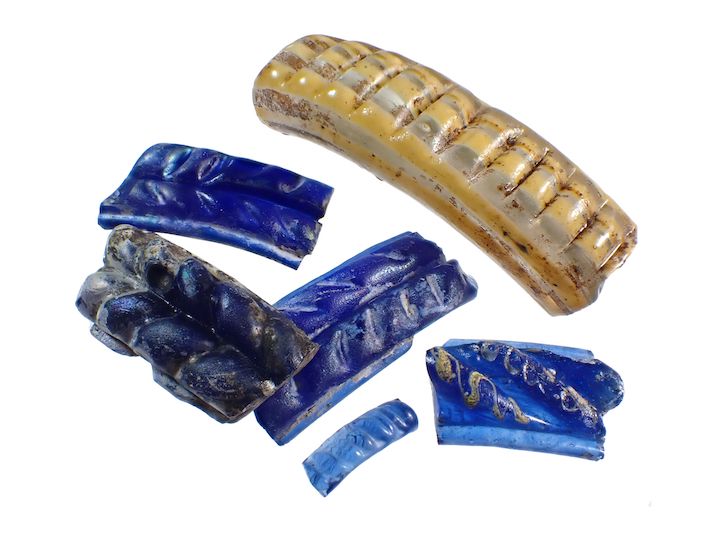 BRNO, CZECH REPUBLIC—According to a statement released by Antiquity, evidence for the presence of a glass workshop has been discovered at Němčice, a Celtic settlement site in the northern Czech Republic that has been dated to the second and third centuries B.C. More than 2,000 gold and silver coins had been unearthed in previous excavations at Němčice, while pieces of glass bracelets and beads were found on the surface. Although Ivan Čižmář of the Institute of Archaeological Heritage Brno and his colleagues did not uncover tools used to make glass at the site during their recent excavation, they did find a mix of completed and partially completed glass items. “No one yet knows how exactly the Celts made glass bracelets,” Čižmář said. The researchers also unearthed amber items in various stages of completion, and identified an elevated area of the site similar to ritual areas at ancient settlement sites in Austria. Čižmář suggests that Němčice may have been a regional production center on a trade route connecting northern and southern Europe. “The presence of these likely sacred features at Němčice indicates the character of the site not only as a trade and production center, but also as a seat of an elite and ritual center,” he explained. Read the original scholarly article about this research in Antiquity. To read about glass found in Turkey that was recycled to create Late Antique mosaics, go to "Reduce, Reuse, Recycle."
BRNO, CZECH REPUBLIC—According to a statement released by Antiquity, evidence for the presence of a glass workshop has been discovered at Němčice, a Celtic settlement site in the northern Czech Republic that has been dated to the second and third centuries B.C. More than 2,000 gold and silver coins had been unearthed in previous excavations at Němčice, while pieces of glass bracelets and beads were found on the surface. Although Ivan Čižmář of the Institute of Archaeological Heritage Brno and his colleagues did not uncover tools used to make glass at the site during their recent excavation, they did find a mix of completed and partially completed glass items. “No one yet knows how exactly the Celts made glass bracelets,” Čižmář said. The researchers also unearthed amber items in various stages of completion, and identified an elevated area of the site similar to ritual areas at ancient settlement sites in Austria. Čižmář suggests that Němčice may have been a regional production center on a trade route connecting northern and southern Europe. “The presence of these likely sacred features at Němčice indicates the character of the site not only as a trade and production center, but also as a seat of an elite and ritual center,” he explained. Read the original scholarly article about this research in Antiquity. To read about glass found in Turkey that was recycled to create Late Antique mosaics, go to "Reduce, Reuse, Recycle."
Possible Iron Age Glassworks Identified in Central Europe
